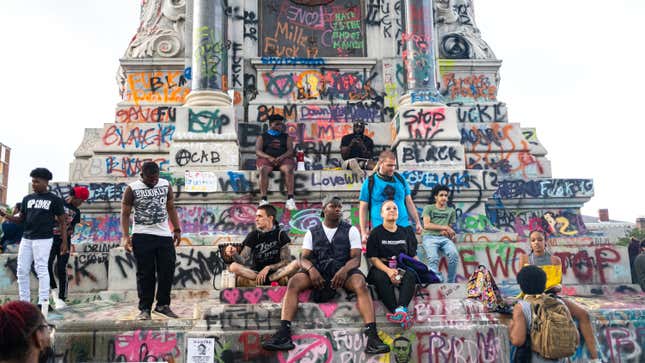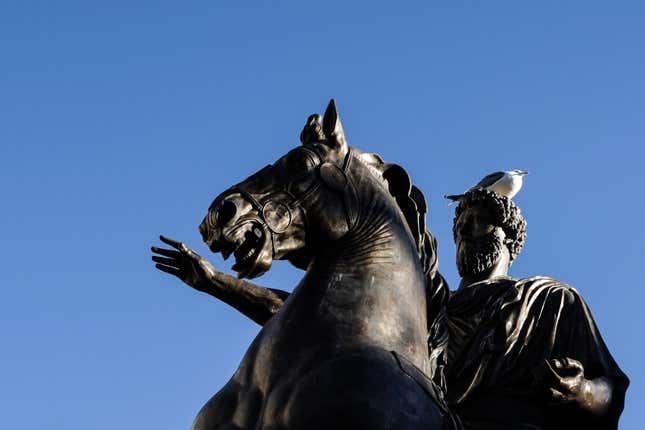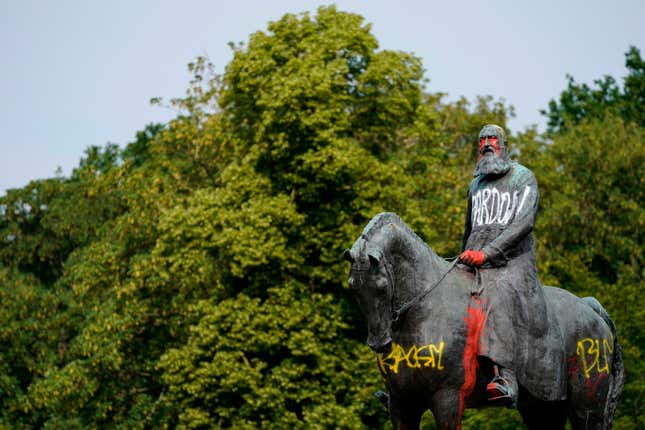They All Fall Down
In Depth

All over America—and increasingly, across the world—statues are falling to the ground. They’re being pushed or pulled by coordinated teams of protesters or, if the project is too big for anything less than a professional crane crew, covered in vivid, colorful graffiti. It began with Confederate monuments and moved to Bristol, England where a group of protesters threw a statue of slave trader Edward Colston into the nearby river. Statues of Christopher Columbus, King Leopold II, and Oliver Cromwell are all under a new spotlight. But any king could tell you: These statues were never about history. They were political statements—assertions of control and legitimacy—and there’s absolutely nothing new about their politically-charged toppling, either. In any revolution, one of the first orders of business is to send images of the powerful careening to the ground.
Statuary has long been central to the consolidation of state power. Over the course of his four-decade reign, the Roman emperor Augustus frequently asserted his legitimacy through coins and building projects like the Ara Pacis, “The Altar of Augustan Peace,” essentially a large announcement rendered in marble that Augustus had finally put a stop to all Rome’s many wars at home and farther afield. But he used statues, too, to assert himself as the rightful emperor of Rome at a time when the empire was still adjusting to the idea of being ruled by an emperor at all.

His successors followed in his steps; a heroic equestrian statue of emperor Marcus Aurelius has been particularly influential in the centuries since, inspiring an entire tradition of civic statuary. It survived the Middle Ages and continued on public display in Rome because, as Allison C. Meier explained at JSTOR, the Catholic Church thought it was supposed to be Constantine. Hence it provided a prominent model as the Renaissance gathered steam. Donatello’s Gattamelata, which was commissioned by the Republic of Venice to celebrate an important military leader, would be particularly influential, and over time, equestrian sculpture became a genre unto itself, a go-to for representing overpowering military might, used by European kings for centuries, towering over those walking by.
-

-

-

-

-

-

-

-

-

-

-

-

-

-

-

-

-

-

-

-

-

-

-

-

-

-

-

-

-

-

-

-

-

-

-

-

-

-

-

-










































